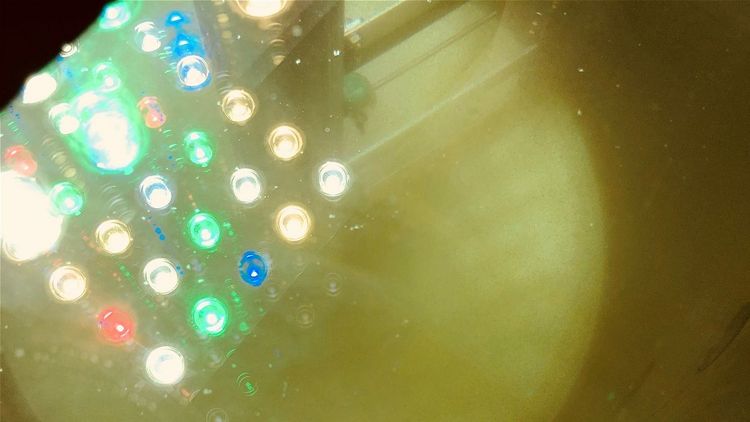Junior scientists simulate algal bloom
Wilhelmshaven/Oldenburg. In an interdisciplinary approach, researchers within the PhD training group EcoMol (The Ecology of Molecules) at the ICBM currently investigate the development of a so-called algal bloom under close-to-nature conditions in a laboratory. Scientists involved in this project are nine ICBM Ph D students plus their supervising tutors, one doctoral candidate from the JadeUniversity of Applied Sciences as well as two scientists of the Helmholtz Institute for Functional Marine Biodiversity (HIfMB).
When the days get longer and brighter, minute unicellular algae begin to proliferate in the North Sea. They start to bloom. These microalgae are sort of an entry area into the food web in front of our coasts: While catching energy from the sun, they form sugars and body substance. These blooms can get really huge under certain conditions. This can become a problem in case of oxygen depletion in the deep water due to the degradation of dead algae.
During the unique experiment at the Wilhelmshaven site of ICBM, the scientists investigate the current developments around an algal bloom in a very close meshed manner, using eleven so-called planktotrons. Basically these are 600 liter steel barrels, in which it is possible to exactly preset light or nutrient availability, for instance. Some parameters are recorded permanently, others on a hourly or daily basis. The researchers will be able to draw an extensive picture at the end of the six weeks experimental period, by the end of april. Up to that time, they work in day and night shifts, even during the Easter holiday.
Follow us
on Twitter ![]()



![[Translate to English:]](/f/5/_processed_/3/2/csm_ICBM-Logo-transparent-_91fe1c6774.png)
